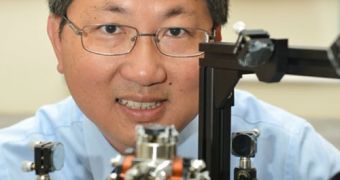Every object that has mass is a source of gravity. This truth, well known to physicists, was used in space exploration technologies to assess the distribution of mass within other planets and moons. But now the technology may have found a use closer to home, particularly in the search for fossil fuels.
Devices used to measure extremely weak gravitational fields, produced by relatively small objects or structures, can be used to search for oil and natural gas deposits underneath the ocean's crust, participants at the British Science Festival heard today, September 5.
University of Aberdeen astrophysicist, Dr. Charles Wang, is the leader of a team developing this type of technology. He argued that these devices could potentially be brought to the market within the next five years or so. The future sensors need to be capable of supporting underwater deployment.
“The usual gravity we experience and understand is Earth’s gravity, but in reality every object is a source of gravity. If you have a sensor with high enough sensitivity, it will pick up small gravitational changes which indicate the presence of an object,” he told attendants at the conference.
“It is this technology which has been used for decades in the oil and gas industry to detect the existence of prospective oil fields” he went on to say. Currently, the technology is too bulky and power-hungry to take underwater, but that may soon change.
According to Wang, using rubidium atoms may be the key to the whole thing. Lasers are commonly used to measure gravitational pulls, but these light sources tend to work poorly under the waves.
“When we cool [rubidium] atoms to a super cold temperature and trap them in an atom cloud, it acts like a highly precise laser that can measure gravity in a way that is much more accurate than a normal optical laser could achieve,” Wang explains.
He added that this device is simpler and more reliable than standard lasers, primarily because it features no mechanical parts whatsoever. This type of setup is known among physicists as a cold atom trap.
The technology was originally developed by experts at the Rutherford Appleton Laboratory Science and Technology Facilities Council, and was meant to provide astronauts and robotic spacecraft with a means of accurately measuring gravity in space.
The European Space Agency (ESA) used a similar technology on its Gravity Field and Steady-State Ocean Circulation Explorer (GOCE) satellite, a spacecraft that produced the most accurate geoid ever.
“Sensing gravity in space allows us to probe the subsurface formation structure in the Earth’s crust and this can help us in our understanding of climate change and in analyzing geological problems such as earthquakes by tracking continental plate movement and detecting fault lines,” Wang concluded.

 14 DAY TRIAL //
14 DAY TRIAL //